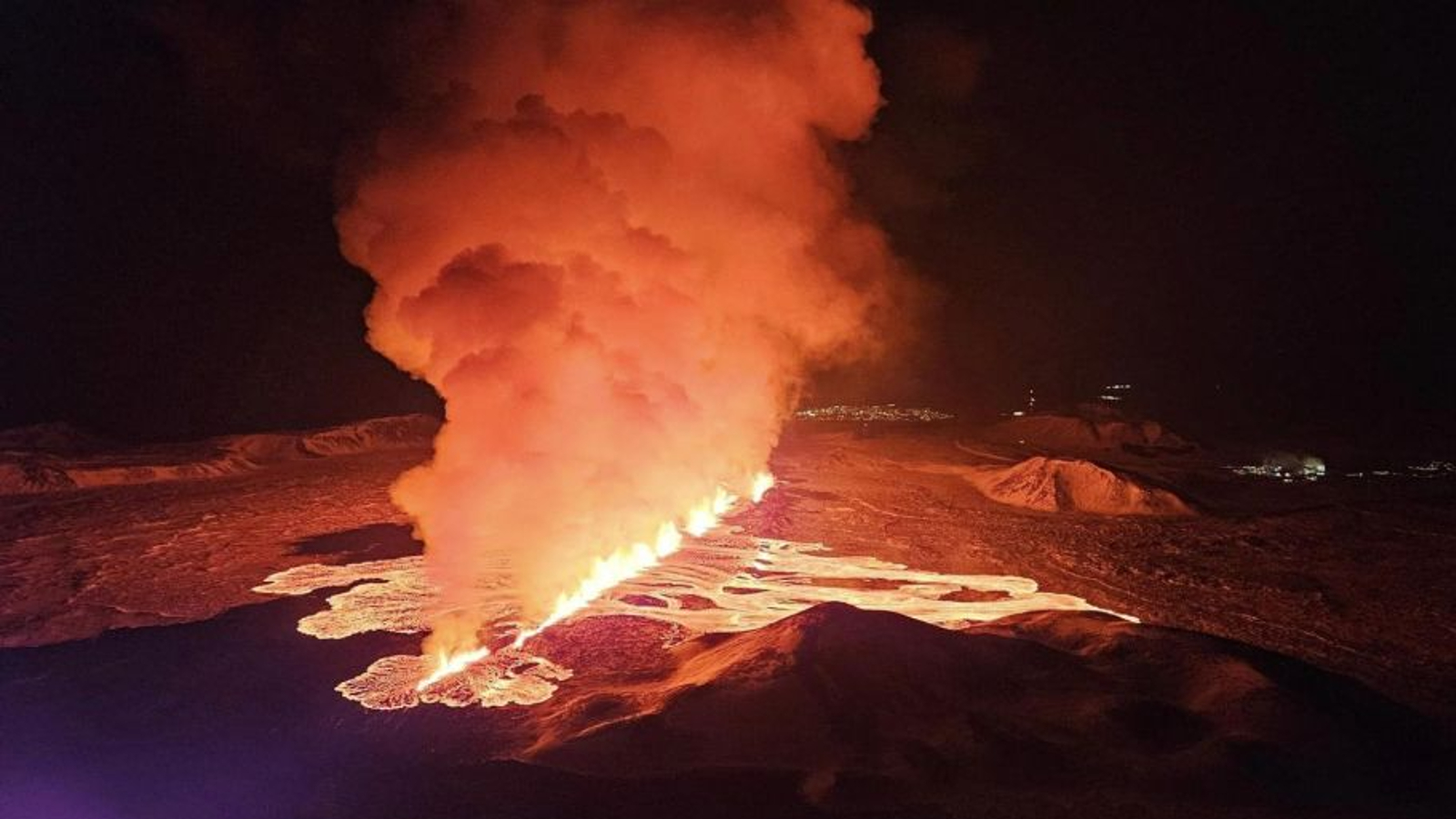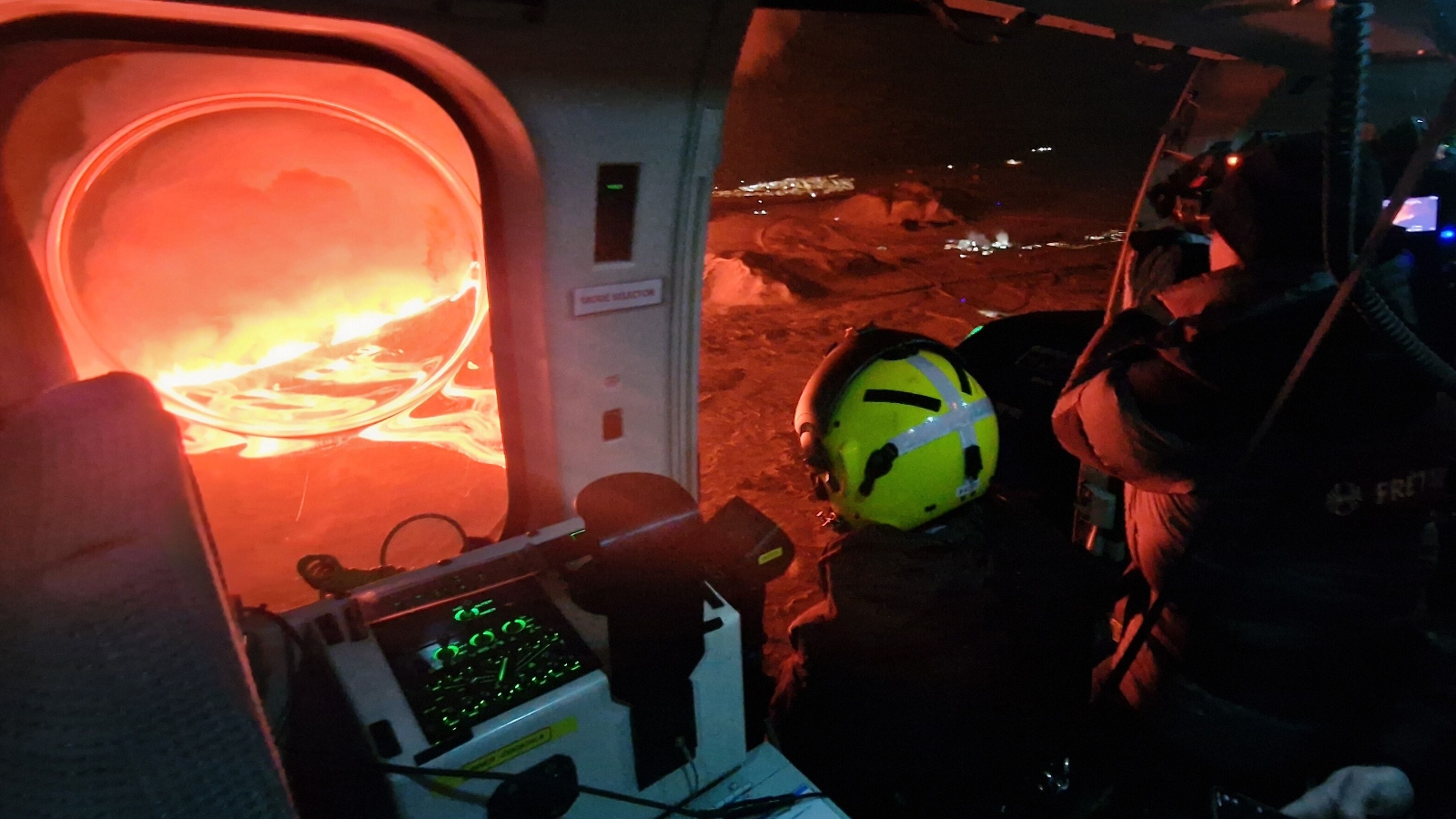Iceland volcano erupts for 3rd time, triggering lava fountains over 200 feet tall
The underground volcano near Grindavík has begun its third major eruption in three months, opening up a 2-mile-long fissure that is pumping out large amounts of lava and ash.

A volcano in the southwest of Iceland has erupted for the third time in three months on Thursday (Feb. 8), opening up a new 2-mile-long (3 kilometers) fissure and spewing out large plumes of lava and ash. At present, the eruption poses no risk to local people, but has caused damage to nearby infrastructure.
The volcano, which is located to the north of the evacuated fishing town of Grindavík in the Reykjanes Peninsula, first erupted on Dec. 18, 2023 after weeks of seismic activity and ground deformation, and again in January this year.
Earlier this week experts warned that the volcano could imminently erupt again after large quantities of molten rock began to pool in the volcano's magma chamber. At around 6:00 a.m. local time (1:00 am ET), the volcano burst through a fissure following a brief period of increased seismic activity, according to the Icelandic Met Office (IMO).
The eruption started strong, with giant lava fountains reaching between 164 and 262 feet tall (50 and 80 meters). The eruption plume, which is made up of ash, smoke and toxic gases, reached up to 2 miles above the surface and the lava's glow could be seen from outside the Reykjanes peninsula before the sun rose, IMO reported.
Related: Iceland eruption is part of centuries-long volcanic pulse
The new eruption began at the Sundhnúksgígar crater near Mount Sundhnúkur to the north of Grindavík. Shortly after the eruption began, a team of scientists was flown to the site in a helicopter to assess how the event might develop, the Icelandic Coast Guard reported.
The rate of lava flow is believed to be slightly less than the first eruption, which at its peak was spewing out enough molten rock to fill an Olympic swimming pool every 20 seconds.
Get the world’s most fascinating discoveries delivered straight to your inbox.
Lava flows from the fiery fissure are expected to flow north, east and west, away from Grindavík, according to Icelandic news site RÚV. The famous Blue Lagoon spa resort and geothermal Svartsengi power plant are also safe at the moment. However, flowing lava has already crossed the road at the exit to the Blue Lagoon, RÚV reported.
There is a chance that another fissure could open up to the south of the new eruption, which could unleash lava flows toward Grindavík, Kristín Jónsdóttir, head of IMO's volcano department, told RÚV. "But we're not seeing that right now."
However, wind-blown pyroclastic slag from the eruption has been found in the town, according to RÚV, who are also reporting that authorities are having difficulties in protecting the region's water supply.
"The situation is simply that we are not managing to protect this as much as we had hoped, and that could lead to lava flowing in such a way that all of Suðurnes [region in southwest Iceland] would be without hot water," Víðir Reynisson of the Icelandic Police told the national broadcaster.
Editors note: We have corrected where the volcano is located. It is in the southwest of the country, not the southeast.

Harry is a U.K.-based senior staff writer at Live Science. He studied marine biology at the University of Exeter before training to become a journalist. He covers a wide range of topics including space exploration, planetary science, space weather, climate change, animal behavior and paleontology. His recent work on the solar maximum won "best space submission" at the 2024 Aerospace Media Awards and was shortlisted in the "top scoop" category at the NCTJ Awards for Excellence in 2023. He also writes Live Science's weekly Earth from space series.




